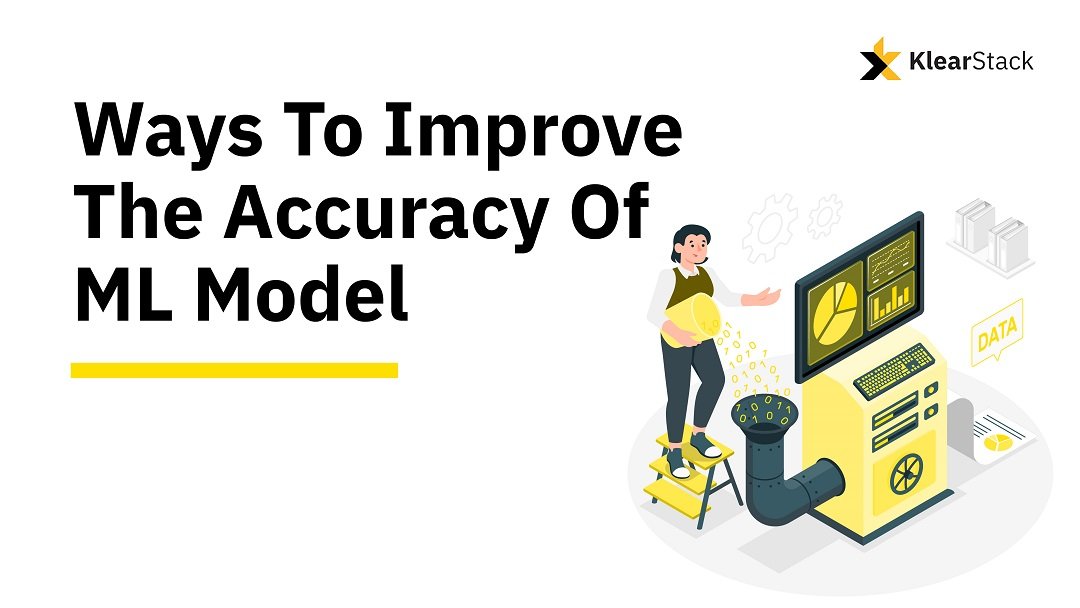How to Increase the Accuracy of the Machine Learning Model (Proven Strategies)

Have you ever spent hours designing surveys to collect authentic primary data first-hand, then spent more resources segregating it and cleaning it up, and finally running it through your designed experiment to train and create an all-encompassing machine learning model only to find out that your significant error range is too large?
One of the most grueling aspects of data science and big data analytics is running tests and coming up with inaccurate ML models. Not only does it compromise the study but having low accuracy of Machine Learning (ML) models can also affect business operations and one’s overall credibility. But how can you improve the accuracy of the ML model?
Well, here are 5 tips that every data scientist wants you to know to eliminate the possibility of an inaccurate machine-learning model. These pointers will help you in improving your design’s accuracy to make you one of the best data scientists out there.
Strategies to Improve The Accuracy Of Machine Learning Model

1. Increase The Number Of Sample Observations
One of the best ways to increase the accuracy of the Machine Learning model is by increasing more data points. By doing so, you’re not only randomizing your observations more but also eliminating or reducing the chance of any bias from presenting itself. Increasing sample data will allow you to add more detail and streamline your model for more accuracy and fewer errors.
Also, it is good to know that as the number of sample points increases, most data tends to follow a normal distribution making computation easier and more reliable. So, if your budget and resources permit, it is advisable to add more data to your ML model.
2. Try To Include Fresh Perspectives
Oftentimes as you add data, the design of the experiment tends to seem clearer and more concrete. However, if this is not the case, try to look for another technique that can help you solve the puzzle.
If you’re struggling to do so, it’s always a good idea to invite your colleagues to share their opinions. Hearing different ideas can uncover new perspectives and add value to your model by seeing different and new relationships between the variables under study.
3. Don’t Ignore The Outliers And Account For Missing Values
Most of the time the data that we have at hand is incomplete or highly biased which may affect the accuracy of ML model. Further, the presence of too many outliers can result in your model being skewed resulting in inaccurate estimations. To deal with both these cases, always treat your outliers and missing data points.
One of the most effective ways of dealing with missing values is by employing central values of tendency. When your data is continuous, you can use the average, modal, and median values to help you fill in the gaps. In the case of categorical or qualitative data, you can create a new class of missing variables to help you improve the accuracy of the Machine Learning model.
Further, when it comes to outliers, sometimes you can opt to delete the observations that are resulting in greater errors or simply perform transformation operations to better include them in your population data for increased accuracy.
4. Improve Your Machine Learning Model Using The Cross-Validation Technique
To assure the validity and accuracy of your machine learning model, it is always advisable to use a cross-validation technique to make sure that you’ve identified the right patterns between the variables and data points to minimise error and eliminate bias.
This technique helps in training the model by comparing results and analysis from population subsets with its complementary subset. The three principles of cross-validation include:
- Reserve a part of the population data. Do not run any experiments to model this data set. Leave it as is.
- Using the rest of the unreserved population data, design an appropriate experiment and create an analogous machine-learning model.
- Testing of the machine learning model using the reserved data set to help analyse the optimality and the accuracy of the Machine Learning model.
5. Don’t Be Shy To Play With Your Algorithms
Finding the perfect algorithm to fit your data points and your model is one of the toughest tasks that you’ll have to complete as a data scientist. Not only will it assure a higher accuracy of ML model but it will also act as a stepping stone for you to base your other related models. Before you’ve finalized your model, be sure to check the compatibility of the algorithm with the nature of the variables under consideration.
Further, pay attention to the parameters used in the study and tune them according to the optimal value of each parameter or statistic to increase the accuracy and performance of the model. Make sure to understand the problem and study all the variables and parameters involved to better assess their impact on the model. It is always better to spend more time focussing on the puzzle at hand and getting a good grasp of the concept as opposed to remediating the model towards the end.

Master The Science of Accuracy of Machine Learning Models
The accuracy of the Machine Learning model can make or break the study. A model with high significant errors, low accuracy and poor precision can cost you your credibility, money, time and other resources.
Further, apart from potentially tarnishing your company, it can also put many stakeholders at risk, especially if your model involves the public sector.
Hence, it is always advisable to invest your resources in training an ML model with high degrees of accuracy to avoid incurring further losses trying to mitigate errors and bias. Follow these tips to create an accurate Machine Learning model and enjoy the wonders of data science!
Book a demo session with KlearStack today!


